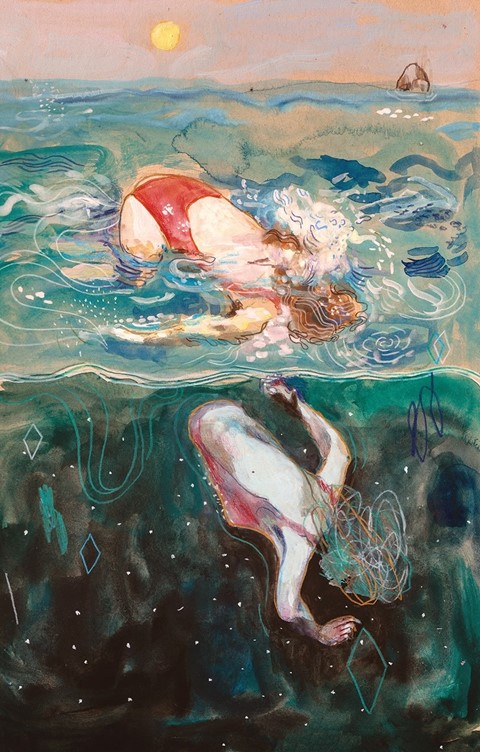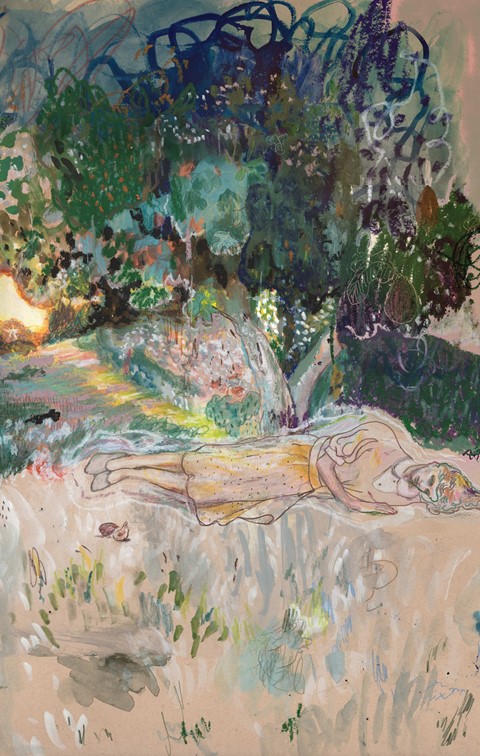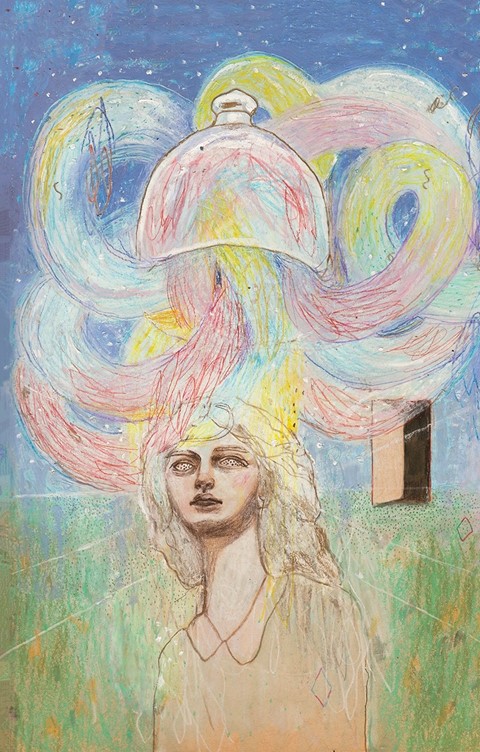Canadian artist Alexandra Levasseur talks about illustrating a new edition of Sylvia Plath’s legendary 1963 novel – and why a hot bath can indeed cure anything
“This is the voice of a young, intelligent woman looking for her place in the world. It’s a timeless theme,” says Canadian artist Alexandra Levasseur, who was recently commissioned to illustrate Sylvia Plath’s feminist roman à clef, The Bell Jar. “Mental health is still taboo – many people suffer, feeling lonely and misunderstood – and Plath writes about it so well.” First published under the pseudonym Victoria Lucas in January 1963, Plath’s only novel finds her protagonist Esther Greenwood in New York, captivated by the Rosenbergs execution, preoccupied with her virginity, and experiencing deepening spells of depression.
Released under her own name in 1966, it wasn’t until 1971 that the book was published in the States, eight years after her death from suicide. The story, largely borrowed from Plath’s own life, has continued to shape literary culture ever since, inspiring a specific kind of devotion that has left subsequent interpretation open to increased scrutiny: in 1979, The New York Times described scenes in Larry Peerce’s film version as “appallingly flat, neither explanatory nor disturbing”, while a cover redesign in 2013 was widely considered jarring. Levasseur’s seven illustrations, which appear in a new edition published by The Folio Society, instead approach Plath’s work with a compelling and affecting tone.

“She has her way of describing what she sees or thinks that is sometimes so surreal that it is impossible to translate,” Levasseur, whose practice extends to painting, sculpture, and animation, explains of the mammoth undertaking. “It is a very special relationship. The elements of nature, like water, air, fire and vegetation are omnipresent, and Plath’s way of describing them is unique and close to me. The Bell Jar exposes Plath’s personal and existential thoughts, which is also the case in my artworks; I illustrate my personal and existential thoughts, so my relationship [with The Bell Jar] is profound.”
Levasseur found that a passage in chapter two was particularly relatable; Esther has just returned to the hotel she’s living in, having left a precarious situation, and proceeds to run a bath. “There must be quite a few things a hot bath won’t cure, but I don’t know many of them ... I lay in that tub on the seventeenth floor of this hotel for-women-only, high up over the jazz and push of New York, for near onto an hour, and I felt myself growing pure again,” writes Plath. “This passage sounds so true to me,” says Levasseur. “The feeling of calmness and security procured by a hot bath is incomparable in my opinion.”

This image of Esther in the bathtub is part of Levasseur’s new series, alongside one of Esther diving to the bottom of the sea, and another featuring the mini matchsticks that appear later in the book. Created on coloured paper using gouache, pencils and oil sticks, the images have an ethereal sensibility that ties into the weight of Esther’s thoughts. “I started always from an element of a scene that has powerful symbolism and that would speak to me: the fig tree, the bath, the sea, the fire … Those elements are often present in my own visual language, so the creation was very natural,” Levasseur notes. “On every page, there were so many images in my mind.”
The Folio Society edition of Sylvia Plath’s The Bell Jar, introduced by Heather Clark and illustrated by Alexandra Levasseur, is out now.

